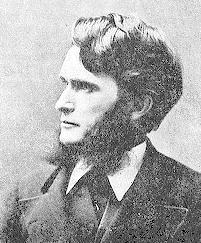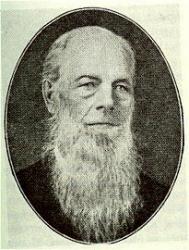Planning worship?
Check out our sister site, ZeteoSearch.org,
for 20+ additional resources related to your search.
- |
User Links
Search Results
Majestic Melodies

Publication Date: 1948 Publisher: James D. Vaughan Publication Place: Lawrenceburg, Tennessee Editors: James D. Vaughan; G. Kieffer Vaughan; Adger M. Pace; W. B. Walbert
Majestic Melodies
Old-Time Power
Author: C. D. T. Appears in 125 hymnals First Line: They were in an upper chamber Refrain First Line: Oh, Lord send the pow'r just now Used With Tune: [They were in an upper chamber]
Old-Time Power
Jesus, Saviour Pilot Me
Author: Rev. Edward Hopper Appears in 1,217 hymnals First Line: Jesus, Saviour, pilot me Used With Tune: [Jesus, Saviour, pilot me]
Jesus, Saviour Pilot Me
Where He Leads Me
Appears in 809 hymnals First Line: I can hear my Saviour calling Refrain First Line: Where He leads me I will follow Used With Tune: [I can hear my Saviour calling]
Where He Leads Me
[O love surpassing knowledge!]
Appears in 95 hymnals Composer and/or Arranger: Rev. E. A. Hoffman Incipit: 55111 11222 32355 Used With Text: Enough for Me
[O love surpassing knowledge!]
[Once I wandered, lost in sin, had no peace within]
Appears in 2 hymnals Composer and/or Arranger: James D. Walbert Incipit: 33334 33322 31331 Used With Text: Wonderful Salvation
[Once I wandered, lost in sin, had no peace within]
[The test of life which all men meet]
Appears in 1 hymnal Composer and/or Arranger: Rev. Rupert Cravens Used With Text: Christ Is the Door
[The test of life which all men meet]
We'll Understand It All
Author: W. D. R. Hymnal: MM1948a #0 (1948) First Line: Often we wonder why, day unto day Refrain First Line: Sorrow may come our way, we know that surely Languages: English Tune Title: [Often we wonder why, day unto day]
We'll Understand It All
Since Jesus Made Me Whole
Author: Adger M. Pace Hymnal: MM1948a #1a (1948) First Line: Light of glory is shining o'er me Refrain First Line: Oh, glory, I'm happy since Jesus came and made me fully whole Languages: English Tune Title: [Light of glory is shining o'er me]
Since Jesus Made Me Whole
Majestic Melodies
Author: A. M. P. Hymnal: MM1948a #1 (1948) First Line: Sweet melodies are ringing in my soul today Refrain First Line: Majestic melodies, sweetest melodies Languages: English Tune Title: [Sweet melodies are ringing in my soul today]
Majestic Melodies
Jeremiah Eames Rankin

1828 - 1904 Person Name: J. E. Rankin Hymnal Number: 31 Author of "God Be With You" in Majestic Melodies Pseudonym: R. E. Jeremy.
Rankin, Jeremiah Eames, D.D., was born at Thornton, New Haven, Jan. 2, 1828, and educated at Middleburg College, Vermont, and at Andover. For two years he resided at Potsdam, U.S. Subsequently he held pastoral charges as a Congregational Minister at New York, St. Albans, Charlestown, Washington ( District of Columbia), &c. In 1878 he edited the Gospel Temperance Hymnal, and later the Gospel Bells. His hymns appeared in these collections, and in D. E. Jones's Songs of the New Life, 1869. His best known hymn is "Labouring and heavy laden" (Seeking Christ). This was "written [in 1855] for a sister who was an inquirer," was first printed in the Boston Recorder, and then included in Nason's Congregational Hymn Book, 1857. Another of his hymns is "Rest, rest, rest, brother rest." He died in 1904. [Rev. F. M. Bird, M.A.]
--John Julian, Dictionary of Hymnology (1907)
========================
Rankin, J. 33., p. 951, ii. Dr. Rankin, b. in N. H. (not New Haven), and received his D.D. 1869, LL.D. 1889 from his Alma Mater. He was President for several years of Howard University, Washington, D.C. His publications included several volumes of Sermons, German-English Lyrics, Sacred and Secular, 1897; 2nd ed. 1898, &c. In addition to his hymns noted on p. 951, ii., he has written and published mainly in sheet form many others, the most important and best-known being:—
1. God be with you till we meet again. [Benediction.] Dr. Rankin's account of this hymn, supplied to us, in common with Mr. Brownlie, for his Hymns and H. Writers of The Church Hymnary, 1899, is: "It was written as a Christian good-bye, and first sung in the First Congregational Church, of which I was minister for fifteen years. We had Gospel meetings on Sunday nights, and our music was intentionally of the popular kind. I wrote the first stanza, and sent it to two gentlemen for music. The music which seemed to me to best suit the words was written by T. G. Tomer, teacher of public schools in New Jersey, at one time on the staff of General 0. 0. Howard. After receiving the music (which was revised by Dr. J. W. Bischoff, the organist of my church), I wrote the other stanzas." The hymn became at once popular, and has been translated into several languages. In America it is in numerous collections; and in Great Britain, in The Church Hymnary, 1898, Horder's Worship Song, 1905, The Methodist Hymn Book, 1904, and others. It was left undated by Dr. Rankin, but I.D. Sankey gives it as 1882.
2. Beautiful the little hands. [Little ones for Jesus.] Given without date in Gloria Deo, New York, 1900.
Dr. Rankin's translations include versions of German, French, Latin, and Welsh hymns. His contributions to the periodical press have been numerous.
--John Julian, Dictionary of Hymnology, New Supplement (1907)
Jeremiah Eames Rankin
Lewis Hartsough

1828 - 1919 Person Name: L. H. Hymnal Number: 55 Author of "I Hear Thy Welcome Voice" in Majestic Melodies Hartsough, Lewis, was born at Ithaca, New York, Aug. 31, 1823. Of his hymns the following are in common use:—-
1. I hear Thy welcome voice. The Divine Invitation.
2. In the rifted Rock I'm resting. Safety in Jesus.
3. Lead me to the Rock that's higher. Safety in Jesus.
4. O who'll stand up for Jesus? All for Jesus
Nos. 1-3 are in I. D. Sankey's Sacred Songs & Solos, 1878 (1 and 3 with music by Hartsough).
--John Julian, Dictionary of Hymnology, Appendix, Part II (1907)
=================
Hartsough, Lewis, p. 1569, ii. Mr. Hartsough entered the ministry of the Methodist Episcopal Church in 1851, and is now (1905) residing in Mount Vernon, Indiana. He was musical editor of J. Hillman's Revivalist, Troy, 1868, and co-editor of The Sacred Harmonist, Boston, 1864, and Beulah Songs, Phila., 1879. In addition to the hymns named on p. 1569, ii., "Let me go where saints are going" [Heav'n desired] (1861) has come into common use. It appeared in W. B. Bradbury's Clarion, 1867, p. 83. Concerning his hymn, "I hear Thy welcome voice," Mr. Sankey says in his My Life and Sacred Songs, 1906, p. 11(3:—
The words and music of this beautiful hymn were first published in a monthly, entitled, Guide to Holiness, a copy of which was sent to me in England. I immediately adopted it, and had it published in Sacred Songs and Solos. It proved to be one of the most helpful of the revival hymns, and was often used as an invitation hymn in England and America." [Rev. L. F. Benson, D.D.]
--John Julian, Dictionary of Hymnology, New Supplement (1907)
================
Hartsough, Lewis. (August 31, 1823--January 1, 1919). Details of his early life are lacking. After being admitted to the Oneida, New York, Conference of the Methodist Episcopal Church in 1851 and serving several pastorates in that state, his health failed and he went to Utah where he was influential in establishing the Utah Mission, later becoming its superintendent. Upon relinquishing that position he moved to Mt. Vernon, Iowa, where he spent the remainder of his life. Bird's statement that he lived in Indiana is erroneous. He was minister of the South Street Methodist Episcopal Church, Utica, New York, when he first became associated with Joseph Hillman, who chose him to act as musical editor of The Revivalist, a gospel hymn book which went through eleven editions in five years, 1868-1872. This book had a remarkable sale and was doubtless used in more churches during the 1870s than any other of similar character. To it the Reverend Hartsough contributed, in one edition, twelve texts, fourteen tunes, and thirty arrangements of tunes, several of the latter being of the religio-folk variety which had been so popular in the early camp meetings. It is a valuable source work.
"I love to think of the heavenly land" (p.1573) is by Hartsough. "I hear thy welcome voice (p.1569), originally in six four-line stanzas, with Refrain, in full S/1931; with the first three stanzas, slightly emended, Brethren/1951; with stanzas 1, 2, 3, and 5, also emended, in Hymns of the Living Faith, 1951. Writeen in 1872 with musical settings by the author, it is the only one of his many songs which has continued in use.
Source: Metcalf, Frank J. American Writers and Compilers of Sacred Music; several editions of The Revivalist.
--Robert G. McCutchan, DNAH Archives
Lewis Hartsough
James Nicholson
1828 - 1896 Hymnal Number: 65 Author of "Whiter Than Snow" in Majestic Melodies James L Nicholson United Kingdom/USA 1828-1876. Born in Ireland, he emigrated to the United States around age 25. He lived in Philadelphia, PA, worked as a postal clerk, and was a member of the Wharton Street Methodist Episcopal Church there for about 20 years, where he taught Sunday school, led singing in church, and assisted in evangelical work. This was also hymn writer, William J Kirkpatrick’s, church. Around 1871 he moved to Washington, DC, and worked as a postal clerk there. In addition to his hymn writing, he also wrote several books, one on birds and their care, one on forensic medicine. He died in Washington, DC, but was buried in Philadelphia, PA.
John Perry
===============
Nicholson, James, an American Methodist minister, is the author of (1) "Dear [Lord] Jesus I long to be perfectly whole" (Holiness desired); and (2) "There's a beautiful land on high " (Heaven), both of which are in I. D. Sankey's Sacred Songs and Solos, 1878.
--John Julian, Dictionary of Hymnology, Appendix, Part II (1907)
James Nicholson


 My Starred Hymns
My Starred Hymns

